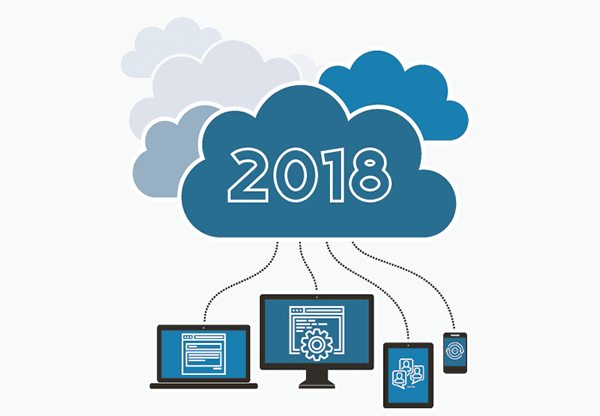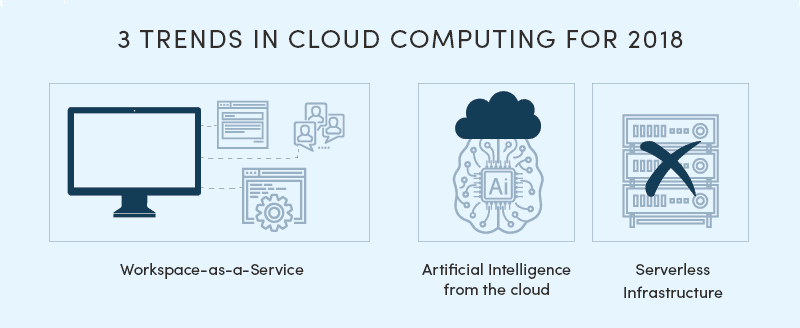The topic of Cloud Computing is becoming increasingly important, in particular in the business context: about two thirds of all businesses already use cloud computing in 2018, nearly one third even relies on Public Cloud Computing.
The current status of Cloud Computing in 2018
For the following years, continuous growth is expected. According to prognoses, the global overturn of the cloud will increase from currently 246 billion US dollars to 383 billion in 2020. German businesses have recognised the cloud’s huge potential and have overcome their resentments. Despite prevailing security concerns, the signs of the times guide businesses towards the cloud. In our infographic we have gathered current data and facts on the subject of cloud computing 2018. The results are an important indicator for the state of digitisation of processes in German businesses. Which challenges arise in this context, which possibilities does the cloud offer for the economy?
The Cloud’s Advantages Form an Entrepreneurial Perspective
The first question businesses naturally have is which possibilities the cloud offers and why transitioning to a cloud infrastructure can make sense. Among the special advantages of the cloud counts its flexibility: Everything-as-a-Service can be scaled without any trouble. It does not matter whether more resources during peak times are required, or the general performance is to be adapted to current demands: the provider can generally react to these changes rapidly and the costs will normally be calculated according to actually used services. Since the competition between different providers creates an attractive price level, high fixed costs do not usually occur. Should there nonetheless be an issue, customers have the option to flexibly change provider and thus avoid any dependence.
Low Up-Front Investments
The initial financial hurdle is relatively low with cloud computing in 2018. Licences for certain software solutions can usually be financed flexibly through Pay-as-You-Go models. Users only pay for what they actually use. The administrative effort for licence distribution and -management is thus minimised. The IT staff’s workload is reduced and consequently resources and time become available for other projects. Products from the cloud, such as graphic programmes, can often be purchased as a license-subscription-model. Due to these significant advantages of cloud computing, more and more businesses dare to transition to the cloud.
Data Security Remains a Critical Subject
A critical topic, however, is data security, especially for businesses which have so far done without Public Cloud. About 30% of businesses worry about unauthorised access to sensitive company data, 20% fear possible data loss and roughly the same percentage of businesses is concerned that important know-how could be lost. More than 70% think that data is more difficult, or much more difficult to protect in the Public Cloud than in the internal IT network. On the other hand, 68% of interviewees reported that they did not have any incidents regarding data security in the cloud for the past twelve months.
It can generally be observed that acceptance of the cloud varies from sector to sector: In IT and telecommunication, already 79% of businesses interviewed use the cloud; in the energy sector, as many as 87% are cloud users. The trade and insurance sector are slightly more conservative, 52%, respectively, 58% of businesses in these sectors use the cloud. Among the most popular applications is Office, which is used by 46% of ‘‘Software-as-a-Service’’ users. This result can probably be explained by the fact that Microsoft has for some time been licensing its Office package preferably as SaaS.
A Glance into the Future of Cloud Computing
We have taken a look into the future of cloud computing from 2018. The future promises a lot of potential, as well as challenges. Businesses’ growing willingness to manage their data and applications via the cloud, as well as their increasing open-mindedness, shows that the paradigm shift is already fully underway. Along with Workspace-as-a-Service, the cloud will become the virtual workspace of the future. The giving up of own server infrastructure or the explosive subject of Artificial Intelligence (AI) will both find their way into the discussion about the cloud. Perhaps all the more reason for businesses to take the plunge into the cloud.


